TOP 9 MISLEADING BEAUTY ADVERTS THAT WERE BANNED
Beauty commercials seem too good to be true. Dailymail selected top 9 misleading cosmetics commercials that got banned! And here they are:
#1 Clairol Nice ‘n’ Easy hair dye
TV commercial for Clairol Nice ‘n’ Easy hair dye was banned by the The Advertising Standards Authority (ASA) due to the advert ‘misleadingly exaggerated the capability of the product’. The commercial showed Christina Hendricks changing her red hair for blonde. The truth is that the commercial was filmed in reverse. Ms Hendricks’s natural hair color is blonde and she has been dyeing her hair red for many years. The company asked her not to color her hair for eight weeks before filming. She then used Nice ‘n’ Easy’s Natural Honey Blonde dye to record the moment at the end of the video. The next day, she dyed her hair back to red. The beginning of the ad was filmed.

#2. Christian Dior Show New Look Mascara
In the printed ad, Natalie Portman has a feathery fan of lashes which claimed to a result of “the miracle of a nano brush for an unrivalled lash creator effect. It delivers spectacular volume-multiplying effect, lash by lash.” Dior claimed, they retouched the picture to ‘stylistically lengthen and curve her lashes’.

#3. Lancome Teint Miracle
The printed ad appeared first in glossy magazines featuring a radiant Julia Roberts and a picture of a foundation. The ad claims that ‘aura is natural light emanating from beautiful skin. We can reproduce this…Lancome invents its first foundation that recreates the aura of perfect skin. Instantly complexion appears naturally bare, beautifully flawless and luminous, as if lit from within. See yourself in a new light.’ ASA conluded that the image ‘exaggerated by digital post-production techniques’, as a result the ASA ‘could not conclude the ad image accurately illustrated what effect the product could achieve’.
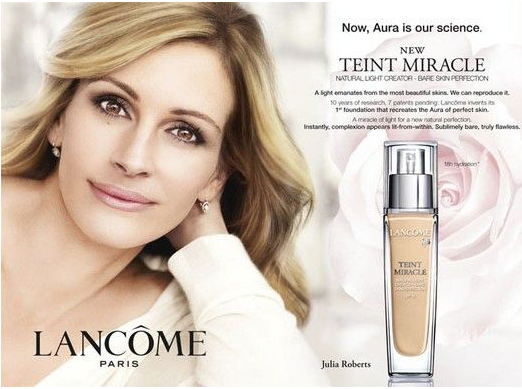
#4. Estee Lauder Body Performance Slim Shape Anti-Cellulite Visible Contouring Serum
In a printed ad, you can see a model in a perfect shape with smooth thighs and flawless skin, gazing at a bottle of thigh-slimming serum.
The ad claims that “this multi-action serum with our exclusive thermo-genic complex and potent Asian herbals melts away the fatty look of cellulite. Re-firms and tightens to help keep that dimpled look from coming back.”
To backup their ad, Estee Lauder produced a large dossier of evidence to prove their wonder cream could do what they said. When the ASA examined the skin-tightening tests, they found they had been performed on the backs of hands, not the thighs or bottom.
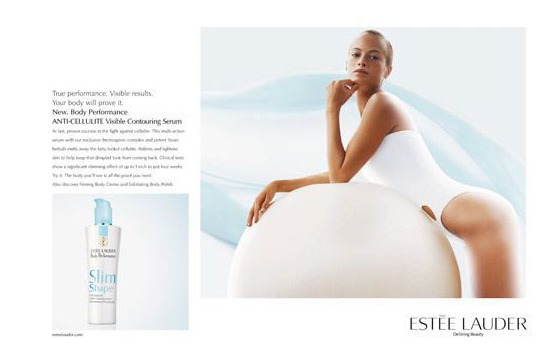
#5. Olay Definity Eye Illuminator
The magazine ad shows Twiggy, 60, with almost no wrinkles. The ad claim claims that “Olay is my secret to brighter-looking eyes. Because younger-looking eyes never go out of fashion . . . reduces the look of wrinkles and dark circles.” It turned out that post-production “retouching” was used to achieve the result. The ASA concluded that this could give consumers “a misleading impression of the effect the product could achieve”. Olay then backtracked, saying the retouching shouldn’t have happened. They subsequently reproduced the advert with no retouching around the eyes.
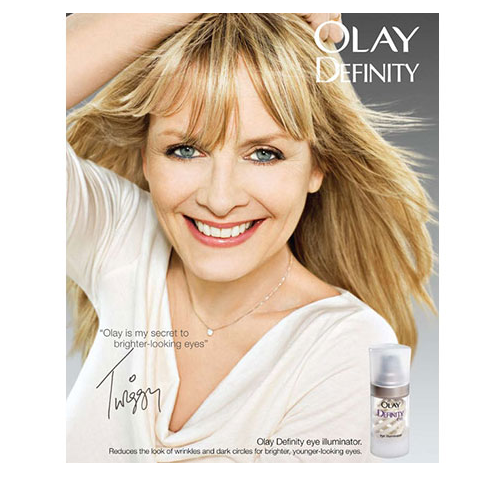
#6. Rimmel 1-2-3 Looks Mascara with Georgia May Jagger
Georgia May Jagger appeared in two print adverts and one TV ad for a mascara that claimed to be able to create three different looks. In each ad, Jagger had progressively longer lashes. The ad claims that you can “just turn the dial. Adjustable lash volume from light to dramatic . . . three hot looks in one mascara.”
Even the ads contained small print that stated “shot with lash insert” they did not, say the ASA, “make it clear that the lash inserts used were of different lengths”, which made the ads “misleading”.
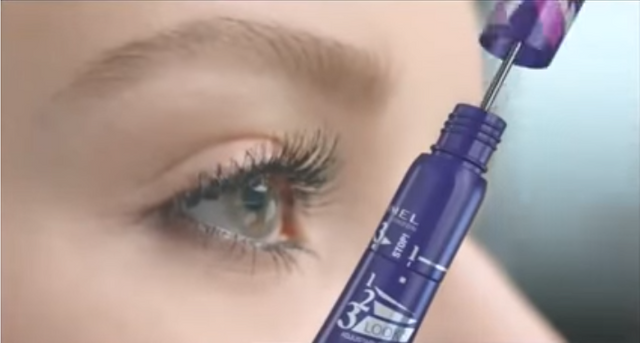
#7. Tri-Aktiline Instant Deep Wrinkle Filler
The ASA concluded that claims by cosmetics giant Estee Lauder about its Tri-Aktiline Instant Deep Wrinkle Filler were misleading.
The company tried to backup their claims by providing a statistic that seven in ten women who used the product reported a visible filling of wrinkles immediately and after a month 83 per cent of users reported improvement in the appearance of lines.
After the ASA investigated Estee Lauder’s claims, they found out that the results were based on clinical tests with just 25 women and the effect was judged with photos made before and after the product usage. The ASA said: “We understood from the expert that it constituted an open, non-randomised trial on 25 women, was not blinded, and did not include a control group. We understood that, although the imaging technique showed an effect on lines and wrinkles, it was not clear whether the same optical effect could be detected by a human observer. We noted the ad stated “Start to see your wrinkles disappear instantly” and considered that claim implied the product could reduce the wrinkles themselves, not merely reduce the appearance of the wrinkles. We considered that a consumer evaluation study was not sufficient to support a claim for the reduction of wrinkles. We concluded that the clinical study and excerpts from the consumer evaluation study were not sufficient to substantiate the claim and therefore that Estée Lauder had not justified it.”
In the end, the ad was banned.
#8. L’Oreal Revitalift Repair 10
The ad shows a black-and-white image of Rachel Weisz next to the list of ten ways in which the moisturiser tackles signs of ageing. The ad claims that “wrinkles appear reduced. Skin looks smoother. Complexion looks more even. It’s not a facelift, it’s Revitalift.”
The ASA found out that Weisz was photographed in flattering lighting and in monochrome, and the picture was ‘enhanced’ in post-production. The ASA concluded that the image had been “altered in a way that substantially changed her complexion to make it appear smoother and more even [and so] misleadingly exaggerated the performance of the product”.
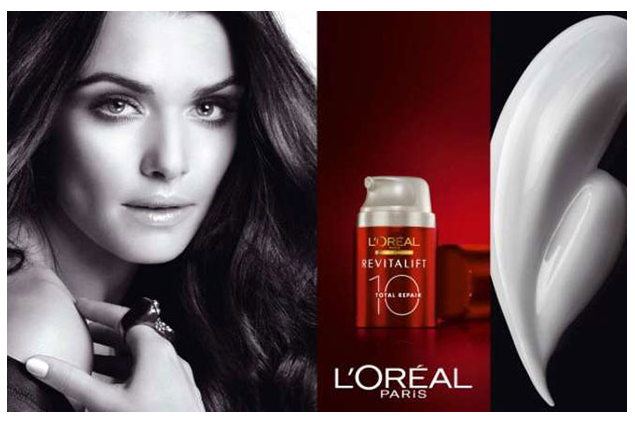
#9. Clinique Even Better Eyes
In this video ad, the model applies a tube of eye cream. Moments later, as a voice announces “You see it instantly. Even Better Eyes …” the model is shown bathed in light.
The ad claims that “now, new Clinique Even Better Eyes takes eyes out of the shadows …”
The ASA concluded that in the final sequence of the TV advert, the model’s face “had been defocused except for her eyes, and that her skin, including the under-eye area, appeared illuminated” and as the result the ad “gave a misleading impression about the performance capabilities of the product”.

Have you ever used any of these products? Do they really work?
Disclaimer: the article was first published at promakeuptutor.com
Hi! I am a robot. I just upvoted you! I found similar content that readers might be interested in:
http://promakeuptutor.com/top-9-misleading-beauty-adverts-banned/